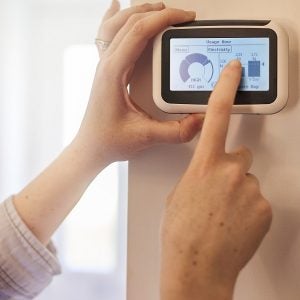 In early October, the Illinois Commerce Commission approved a new electricity rate that holds tremendous opportunity — a time-of-use rate option for customers of Commonwealth Edison Company, the largest utility in the state. This new pricing structure has the potential to lower bills for consumers, while reducing our reliance on dirty sources of power.
In early October, the Illinois Commerce Commission approved a new electricity rate that holds tremendous opportunity — a time-of-use rate option for customers of Commonwealth Edison Company, the largest utility in the state. This new pricing structure has the potential to lower bills for consumers, while reducing our reliance on dirty sources of power.
After five years of fighting for a TOU rate in Illinois, EDF and the Citizens Utility Board helped design the voluntary new option for customers, which includes three pricing periods for residential customers: Super Peak (2pm-7pm), Off Peak (10pm-6am) and Peak (all other times), with prices being highest during the Super Peak, and lowest during Off Peak. The pilot will serve residential customers and target electric vehicle owners, whose usage is typically higher but more flexible. The time-of-use option is similar to real-time pricing currently available (also on a voluntary basis) in Illinois, but with distinct, pre-determined pricing periods rather than fluctuating hour by hour as real-time prices do.
What does time-of-use mean?
The price most customers pay for electricity generally is called the “default” rate, and it does not change whether the energy is used at 2 p.m. on a hot, summer day or at 2 a.m. on a crisp fall night. Default pricing ignores the reality that electricity use at times of high system-wide demand (that is, when many others are also using power), is more expensive. A time-of-use rate, conversely, recognizes that the financial and societal costs of electricity are not constant. Electricity is more expensive at times of peak demand, and is typically met with more polluting fuel sources. By pricing electricity according to its real market and societal costs, a time-of-use rate encourages customers to shift their electricity use to less expensive, less polluting times.
New time-of-use program empowers Illinois consumers to lower bills, reduce carbon footprint Share on XWhat are the advantages of a time-of-use rate?
A time-of-use rate offers numerous advantages. The electric distribution grid has to be built to meet the times of highest demand. Decreasing those demand peaks can delay or reduce the need for new distribution system investments — which are ultimately passed on to all customers. On a wholesale level, energy purchases are typically socialized among all customers, so purchases of high-priced peak energy are borne by all customers and baked into the default rate. Spreading energy use more evenly throughout the day means energy purchasers can buy less high-priced peak energy, saving all customers money.
Those cost savings are especially seen by participants in the time-of-use rate, who can save money on their electric bill even using the exact same number of kilowatt-hours by shifting a portion of their usage to off-peak times. Real-time pricing, another time-variant pricing option, has been beneficial for customers who have chosen it — research has shown that 97% of Illinois households would have saved money if they had opted-in. We expect similarly positive results with time-of-use. Customer participation in real-time pricing has been relatively low despite the potential benefits for customers. Our hope is that the more predictable pricing structure of the time-of-use option encourages more customers to take advantage of this option in the future.
How do smart home devices fit into time-of-use?
This also significantly enhances the value proposition of smart devices. For example, TOU can help users of smart thermostats reduce air conditioner use during peak times (often, during work hours when people are away from home) by programming these smart devices to increase the AC by a couple of degrees when homeowners are away without sacrificing any temperature comfort. Other smart devices, like delay cycles on dishwashers, are also more appealing to customers when they can see the connection between shifting their energy use and their reduced electricity bill.
In short, a time-of-use rate offers an easy-to-understand incentive for customers to shift their energy use. As electric vehicles, renewables, storage and building electrification gain momentum through market forces and Illinois’ proposed Clean Energy Jobs Act, time-variant pricing will be key to maximizing the benefits of those investments. By rewarding customers for reducing their usage during Super Peak periods and shifting it instead to Off Peak periods, the program will decrease bills and emissions, while serving as a foundation upon which beneficial electrification is built in the state.
It took nearly half a decade of work by EDF and CUB to help deliver this victory to Illinois consumers. But, the effort was well worth it, and the benefits will be realized by customers for years to come.









